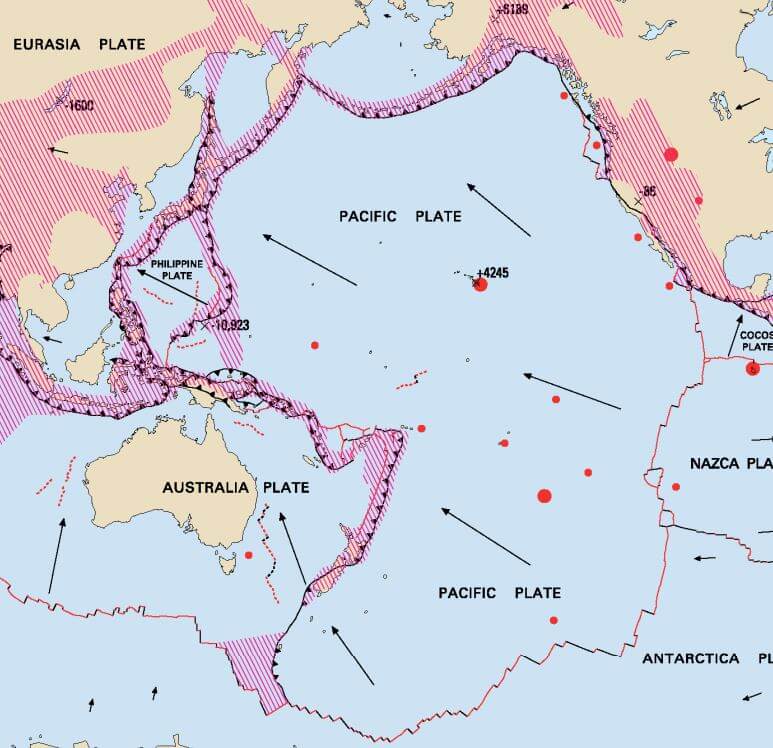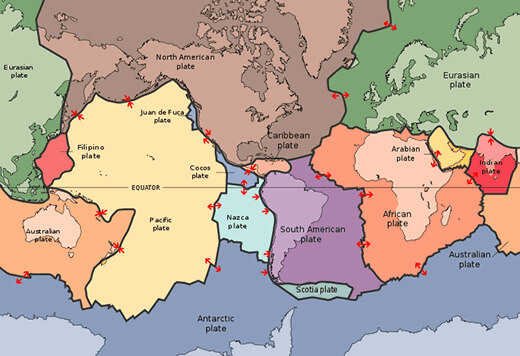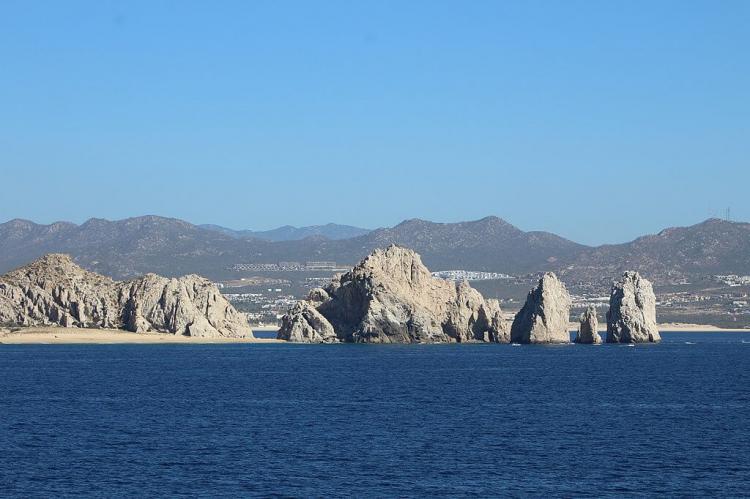The Pacific Plate: Shaping Earth's Geology
The Pacific Plate, Earth's largest tectonic plate, resides beneath the vast expanse of the Pacific Ocean, wielding a profound influence on the geology of our planet. This colossal plate plays a central role in the Pacific Ring of Fire, renowned for seismic and volcanic activities that sculpt the Earth's surface.
The Pacific Plate
Shaping Earth's Geology
The Pacific Plate, Earth's largest tectonic plate, resides beneath the vast expanse of the Pacific Ocean, wielding a profound influence on the dynamic geology of our planet. Spanning an estimated 103,280,000 square kilometers (39,876,000 square miles), this colossal plate plays a central role in the Pacific Ring of Fire, renowned for seismic and volcanic activities that sculpt the Earth's surface.
Plate Tectonics: A Governing Principle
At the core of the Pacific Plate's influence lies the theory of plate tectonics, where its predominantly oceanic crust interacts with neighboring plates, instigating dynamic geological processes. The plate's movements, characterized by convergence, divergence, and transform boundaries, orchestrate the evolution of the Earth's surface above the molten upper mantle.
Complex Pacific Plate Boundaries
The Pacific Plate boasts intricate boundaries, featuring divergent boundaries in the east, convergent boundaries in the west, and transform boundaries in the north and south. Understanding these boundaries is crucial to unravel the geological complexities orchestrated by the Pacific Plate.
-
Divergent Boundaries: The eastern boundary, delineated by the East Pacific Rise, showcases divergence from the Cocos and Nazca Plates. Here, the Pacific Plate and adjacent plates move away from each other, creating a gap where magma rises from the mantle, solidifying to form a new oceanic crust. This process is fundamental to the continuous renewal of the Earth's crust.
-
Convergent Boundaries: Conversely, the western boundaries entail convergent interactions, with the Pacific Plate subducting beneath the Eurasian, Philippine, and North American plates. Notable subduction zones like the Aleutian, Mariana, and Philippine trenches signify the transformative processes at play. Convergence at these boundaries can result in the subduction of one plate beneath another or a direct collision with far-reaching geological consequences.
-
Transform Boundaries: Transform boundaries define the northern and southern extremities, where the Pacific Plate engages with the North American and Australian Plates. The San Andreas Fault, symbolic of the northern boundary, underscores the horizontal sliding motion, while the Macquarie Ridge marks the southern boundary. At these boundaries, plates slide past each other horizontally, releasing seismic energy, often manifesting as earthquakes.

Map depicting the Pacific Plate boundaries and relative motion.
Pacific Plate Boundaries in the Americas
Along the western coast of North America, the Pacific Plate engages in multifaceted interactions with the North American Plate, forging diverse boundary types. Subduction dynamics unfold at the Aleutian Trench to the north, while the middle section experiences transform boundaries, featuring intricate connections with the Cocos Plate. Towards the southeast, a divergent boundary with the Nazca Plate manifests as the East Pacific Rise. In contrast, a similar boundary with the Antarctic Plate shapes the Pacific-Antarctic Ridge to the south.
Baja California Peninsula
The Pacific Plate's narrative extends to the Baja California Peninsula and Southern California, where its gradual northward movement, spanning around six million years, has intricately shaped the geological features of these regions. This transformative process has separated these areas from mainland Mexico and given rise to the distinctive Gulf of California, symbolic of the ongoing geological evolution sculpted by the Pacific Plate's relentless motion.

Map illustrating the major tectonic plates of the world.
